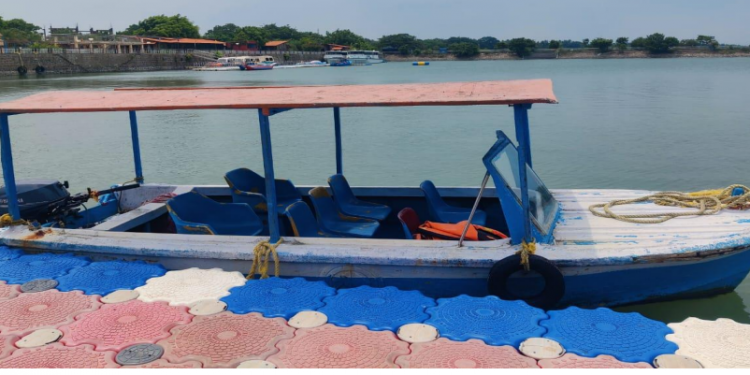Bhubaneswar: With an aim to make Chilika Lake a zero-emission zone, the state government has decided to introduce solar/electric-powered boats in the lake soon. For this purpose, the Odisha Renewable Energy Development Agency (OREDA) has invited e-tenders for the design, engineering, manufacturing and deployment of 20-seater solar or electric boats, with zero emission including comprehensive maintenance for two years at various places in Chilika.
In a letter, OREDA director Niharika Nayak said, “The government has invited e-tenders from eligible bidders for converting diesel boats into solar/electric boats through proper design, engineering, manufacturing and retrofitting for the purpose of promoting decarbonisation of fishing sector and eco-tourism in Odisha.” The last date for online tender submission is July 12 while hard copies can be submitted by July 18, official said. “The pilot project is aimed at finding an alternate and viable green mobility solution for the existing boats that cause pollution due to oil spills in the region. Due to this, the number of migratory birds has been decreasing every year,” they said. Crux Power Private Limited managing director Chandrashekhar Mishra said, “Solar boat in Chilika is a noble initiative for eco-friendly and sustainable development in the area and to reduce dependency on fossil fuels.
At the same time, we should provide a sufficient number of charging stations around the area with proper maintenance plans. To make it a success, multiple vendors with a similar track record should be engaged and the government should keep a tab on the operations along with incentivising the vendors performing better.” It is to be mentioned that Chilika Lake is the largest brackish water lake along the east coast of India. It is the largest lagoon in India and counted among the largest lagoons in the world. It is the largest wintering ground for migratory waterfowl found anywhere on the Indian sub-continent. The Lake is a productive ecosystem, with fishery resources and is spread over three districts- Puri, Khurda and Ganjam. Based on a highly productive ecosystem, rich biodiversity and socio-economic importance, Chilika was designated as a Ramsar site in 1981. Some rare, vulnerable and endangered animal species listed in the IUCN (International Union of Conservation of Nature and Natural Resources) inhabit the lagoon area for the whole or at least part of their life cycle.
ARINDAM GANGULY, OP






































